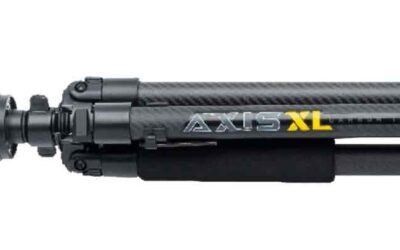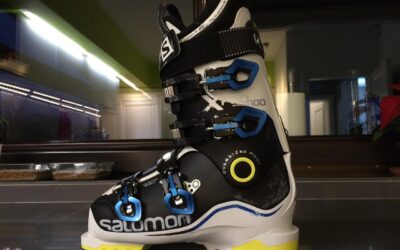“Stay Safe and Prepared on Your Next Boating Adventure”
Boating offers a fantastic way to explore the outdoors, whether you’re fishing, paddling, or simply enjoying a day on the water. But as thrilling as it can be, safety should always be the top priority. Every year, accidents happen that could have been prevented with a little preparation and awareness. That’s why understanding and practicing boating safety is crucial for anyone setting out on the water, from beginners to seasoned boaters. In this guide, we’ll cover the essential safety tips that will help you stay safe and make the most of your boating adventures, ensuring every trip is as enjoyable as it is secure.
1. Always Wear a Life Jacket
Wearing a life jacket is the most important safety measure you can take when boating. It might seem like common sense, but many boating accidents turn fatal simply because people weren’t wearing one. A life jacket can keep you afloat if you fall overboard, get knocked unconscious, or become exhausted in the water.
Choosing the Right Life Jacket
- Fit and Comfort: A life jacket should fit snugly but comfortably. It shouldn’t ride up when you lift your arms, and it should allow you to move freely.
- Types of Life Jackets: There are different types designed for various activities. For example:
- Type I: Ideal for offshore use and rough waters, providing the most buoyancy.
- Type II: Suitable for calm, inland waters where quick rescue is likely.
- Type III: Perfect for activities like kayaking and canoeing; offers comfort but less buoyancy.
- Type V: Specialized for certain activities like watersports or paddling.
- US Coast Guard Approval: Ensure your life jacket is approved by the U.S. Coast Guard, as this guarantees it meets safety standards.
Life Jacket Safety Tips
- Always wear your life jacket when on the water, even if you’re a strong swimmer. Accidents happen quickly, and you may not have time to put it on.
- Make sure everyone on board has a properly fitting life jacket, especially children.
- Regularly check your life jackets for wear and tear, and replace them if they show signs of damage.
Wearing a life jacket isn’t just a smart choice; it’s often the law. By making it a habit, you’re taking the most effective step to protect yourself and others on your boating adventures.
2. Check the Weather Before You Go
The weather can change rapidly on the water, turning a peaceful day into a dangerous situation in a matter of minutes. Before heading out, it’s crucial to check the weather forecast to ensure that conditions are safe for boating. Staying informed and prepared will help you avoid getting caught in sudden storms, high winds, or rough waters.
How to Check the Weather
- Weather Apps: Use reliable weather apps like WeatherBug, Windy, or AccuWeather, which provide real-time updates on temperature, wind speed, and the chance of rain.
- Marine Weather Reports: Check local marine weather forecasts, as they offer more detailed information about water conditions, tides, and wind patterns. Websites like the National Weather Service (NWS) provide accurate marine forecasts.
- Radio Alerts: Invest in a VHF marine radio to receive real-time weather alerts and updates from the National Oceanic and Atmospheric Administration (NOAA) while on the water.
Recognizing Weather Changes on the Water
- Darkening Skies: If you notice the sky turning dark or clouds gathering quickly, it’s a sign that a storm may be approaching.
- Sudden Wind Shifts: A sudden change in wind direction or speed often indicates that weather conditions are changing.
- Temperature Drops: A rapid drop in temperature can be a warning of an incoming storm.
Weather Safety Tips
- If the forecast predicts rough weather, postpone your trip. It’s always better to be safe than sorry.
- Have a plan for what you’ll do if the weather suddenly changes while you’re out. Know the nearest safe spots where you can take shelter if needed.
- Carry a waterproof bag with essentials like a rain jacket, flashlight, and extra batteries, so you’re prepared for unexpected changes.
By staying aware of weather conditions, you can avoid unnecessary risks and ensure a safe, enjoyable boating experience.
3. Create a Float Plan
A float plan is like leaving a travel itinerary for your boating trip—it ensures that someone onshore knows your whereabouts and can take action if something goes wrong. In case of an emergency, having a float plan can be a lifesaver, as it gives rescuers vital information to find you quickly.
What Should Be Included in a Float Plan?
- Your Contact Information: Include your name, phone number, and any additional contact details.
- Boat Description: Describe your boat’s make, model, color, registration number, and any identifying features.
- Trip Details: Provide the departure point, destination, route you plan to take, and estimated time of return.
- Names of All Passengers: List the names and contact information of everyone on board.
- Communication Equipment: Note what communication and safety equipment you have, such as a VHF radio, cell phone, or emergency beacon.
Who Should You Share Your Float Plan With?
- A Trusted Friend or Family Member: Choose someone reliable who will follow up if you don’t return as scheduled.
- Local Marina or Harbor Master: If you’re launching from a marina, consider leaving a copy of your float plan with the staff.
Tips for Creating and Using a Float Plan
- Use Templates: Many websites, including the U.S. Coast Guard’s site, offer printable float plan templates that make it easy to fill in the necessary details.
- Update Your Plan: If your plans change while you’re out, inform the person you shared your float plan with to keep them updated.
- Stick to the Plan: Try to stick to the route and schedule outlined in your float plan as closely as possible, and inform your contact if any changes occur.
By creating a float plan, you add an extra layer of safety to your boating trip, ensuring that someone knows where you are and can help if an emergency arises.
4. Know the Navigation Rules
Just like driving a car, boating requires knowledge of the “rules of the road” to ensure everyone’s safety on the water. Understanding and following navigation rules helps prevent accidents and ensures smooth interactions with other boaters.
Key Navigation Rules to Remember
- Right of Way:
- Power vs. Power: When two powerboats approach each other head-on, both should alter their course to the right (starboard) to pass safely.
- Power vs. Sail: Powerboats should always yield to sailboats under sail, as sailboats have the right of way.
- Overtaking: If you’re overtaking another vessel, you must yield and pass safely on either side. The boat being overtaken has the right of way.
- Keep a Safe Speed: Maintain a speed that allows you to react to any hazards or changes in conditions. Always slow down in crowded areas, near marinas, or when visibility is limited.
- Observe Navigation Markers and Buoys:
- Red and Green Buoys: These mark the edges of navigable channels. Remember, “Red, Right, Returning” means keep the red buoys to your right when returning from open water.
- No-Wake Zones: Slow down to idle speed in designated no-wake areas to avoid causing large waves that could damage docks, shorelines, or other boats.
Local Regulations Matter
- Every waterway may have its own specific rules and regulations. Make sure to familiarize yourself with the local laws in your area before heading out.
- Check for any restricted areas, speed limits, or seasonal regulations that may be in place.
Resources for Learning Navigation Rules
- Boating Safety Courses: Enroll in a boating safety course, either in-person or online, to gain a comprehensive understanding of navigation rules.
- Free Resources: Visit websites like the U.S. Coast Guard’s Boating Safety Resource Center for free guides and videos on navigation.
Navigation Tips for Safe Boating
- Always have a marine compass and a nautical map of the area you’re boating in. GPS systems are helpful but can fail, so knowing how to navigate manually is essential.
- Maintain a constant lookout for other vessels, obstacles, and changes in water depth.
Knowing and following navigation rules is essential for keeping yourself and others safe on the water. By respecting these guidelines, you’ll help ensure that your boating adventures are safe and enjoyable for everyone.
5. Stay Sober and Avoid Distractions
Operating a boat requires the same level of attention and responsibility as driving a car, which means staying sober and avoiding distractions is crucial. Alcohol and drugs impair your ability to make sound judgments, react quickly, and navigate safely, increasing the risk of accidents.
The Dangers of Boating Under the Influence
- Impaired Judgment and Coordination: Alcohol slows reaction time and affects coordination, making it difficult to steer, operate controls, or respond to sudden changes.
- Increased Risk of Accidents: According to the U.S. Coast Guard, alcohol use is a leading factor in fatal boating accidents. Even a small amount can drastically reduce your ability to operate the vessel safely.
- Legal Consequences: Boating under the influence (BUI) is illegal in all 50 states, and penalties can include fines, imprisonment, and the loss of boating privileges.
Stay Focused and Minimize Distractions
- Keep Your Eyes on the Water: Always maintain a lookout for other boats, swimmers, obstacles, and changes in water conditions.
- Limit the Use of Electronic Devices: Avoid using your phone or other electronic devices while operating the boat, as this diverts your attention away from the task at hand.
- Assign a Sober Skipper: If you plan to drink, designate a responsible person to operate the boat, just as you would have a designated driver for a car.
Tips for Staying Sober and Alert
- Bring plenty of water and non-alcoholic drinks to stay hydrated and maintain focus.
- Take breaks to rest if you’re on the water for an extended period, as fatigue can also impair your reaction time and judgment.
By staying sober and avoiding distractions, you not only protect yourself and your passengers but also ensure the safety of others sharing the water.
6. Maintain Proper Equipment and Supplies
Having the right safety equipment on board can make all the difference in an emergency. It’s essential to be well-prepared with the necessary tools and supplies to handle unexpected situations, and ensuring your equipment is in good working order before every trip can save lives.
Essential Safety Equipment for Your Boat
- Fire Extinguisher: Fire can break out on a boat for many reasons, from fuel leaks to electrical problems. Make sure you have a U.S. Coast Guard-approved fire extinguisher on board and know how to use it.
- Signaling Devices: Have at least three types of signaling devices, such as whistles, horns, and flares, to attract attention if you’re in distress. A flashlight with extra batteries can also be useful for signaling in low-light conditions.
- First Aid Kit: A well-stocked first aid kit is essential for treating minor injuries and stabilizing more serious ones until help arrives. Include bandages, antiseptic wipes, pain relievers, and any personal medications.
- Anchor and Rope: An anchor can prevent your boat from drifting if you experience engine trouble or need to wait for help. Make sure you have a sturdy rope long enough to reach the bottom in the areas you’re boating.
Regular Maintenance and Checks
- Inspect Your Equipment: Before each trip, check that all safety gear is in good condition. Replace any worn or damaged items immediately.
- Test Your Boat’s Systems: Ensure your boat’s lights, horn, and communication devices are functioning correctly. Test your engine, fuel levels, and bilge pump to avoid breakdowns on the water.
- Check Life Jackets: Make sure life jackets are free of tears, have no signs of wear, and all buckles or straps are working. Replace any that are no longer in top condition.
Additional Supplies to Keep on Board
- Emergency Radio: A VHF marine radio can be a lifeline in emergencies, allowing you to communicate with nearby boats or the Coast Guard.
- Tool Kit: Include basic tools like pliers, screwdrivers, and a wrench, as well as spare parts such as fuses and spark plugs, to handle minor repairs.
- Extra Fuel and Water: Bring enough fuel to account for unexpected delays, and carry extra water to stay hydrated, especially on long trips.
By ensuring you have the proper equipment and conducting regular checks, you’ll be ready to handle emergencies and enjoy a safer boating experience.
7. Know How to Swim and Perform Basic First Aid
Being on the water means there’s always a risk of falling overboard or encountering an emergency. Knowing how to swim and having basic first aid skills are essential for every boater, ensuring you’re prepared to handle unexpected situations with confidence.
The Importance of Knowing How to Swim
- Safety for Yourself and Others: In an emergency, strong swimming skills can help you reach safety or assist someone who’s struggling in the water.
- Overcoming Panic: Being comfortable in the water reduces the likelihood of panicking if you accidentally fall overboard, making it easier to stay afloat until help arrives.
- Encourage Passengers to Learn: Ensure everyone on board has at least basic swimming skills, especially children. It’s an added layer of safety that can make a difference in an emergency.
Basic First Aid Skills Every Boater Should Have
- CPR (Cardiopulmonary Resuscitation): CPR can save a life if someone experiences cardiac arrest or stops breathing after falling into the water. Take a certified CPR course to ensure you know the correct technique.
- Treating Cuts and Scrapes: Minor injuries are common on boats due to hooks, sharp objects, or slips. Learn how to clean wounds properly and apply bandages to prevent infection.
- Handling Hypothermia: Cold water can quickly lead to hypothermia, even in warmer weather. Knowing how to recognize symptoms like shivering, confusion, and slurred speech—and how to warm the person safely—can be lifesaving.
Resources for Learning First Aid and Swimming
- Local Classes: Many community centers, Red Cross chapters, and YMCAs offer swimming lessons and first aid courses.
- Online Training: There are plenty of online resources for first aid, such as videos and tutorials, but in-person training is the best way to build practical skills.
First Aid Kit Essentials
- Include items such as adhesive bandages, antiseptic wipes, gauze pads, tweezers, scissors, and an emergency blanket. Keep the kit in a waterproof container and ensure it’s easily accessible.
By ensuring you and your passengers know how to swim and are equipped with basic first aid knowledge, you add another layer of safety to your boating experience, allowing you to respond effectively to emergencies on the water.
8. Be Mindful of Capacity Limits and Weight Distribution
Overloading your boat can lead to serious accidents, such as capsizing or swamping. Every boat has a maximum capacity for both weight and the number of passengers it can safely carry, and adhering to these limits is crucial for maintaining stability and safety on the water.
Understanding Your Boat’s Capacity
- Check the Capacity Plate: Most boats have a capacity plate located near the operator’s position or on the transom. This plate indicates the maximum weight and the number of people your boat can safely handle. Never exceed these limits, even if it seems like there’s enough space.
- Include Gear and Equipment: Remember that your boat’s capacity isn’t just about people—it also includes gear, fuel, fishing equipment, coolers, and any other items you bring along. Always account for the total weight.
The Importance of Proper Weight Distribution
- Balance the Load: Evenly distribute weight throughout the boat to maintain stability. Placing too much weight on one side or at the bow (front) or stern (back) can make the boat more prone to tipping or swamping.
- Adjust as Needed: If passengers move around or you change equipment during your trip, check your boat’s balance and adjust accordingly.
- Stay Low and Centered: Encourage passengers to stay seated and avoid sudden movements, especially when the boat is underway or in rough waters. Standing up or moving around can shift the center of gravity, making the boat unstable.
Tips for Maintaining Stability
- When anchoring, avoid positioning everyone on one side of the boat.
- If your boat starts to lean or take on water, redistribute weight immediately to regain balance.
- Be extra cautious in rough weather or choppy waters, as waves can make your boat more susceptible to tipping.
By being mindful of your boat’s capacity and weight distribution, you’ll greatly reduce the risk of accidents, ensuring a safer and more enjoyable time on the water for everyone on board.
Conclusion
Boating is an exciting way to explore the outdoors, but safety should always be your top priority. By following these essential boating safety tips—wearing a life jacket, checking the weather, creating a float plan, understanding navigation rules, staying sober, maintaining proper equipment, knowing how to swim and perform first aid, and being mindful of capacity and weight distribution—you’ll be well-prepared for a safe and enjoyable experience on the water. Remember, the more prepared you are, the more you can relax and fully enjoy your time boating. Stay safe, and happy boating!
Share your ideas and experiences in the comments below or in the Boating forum




0 Comments